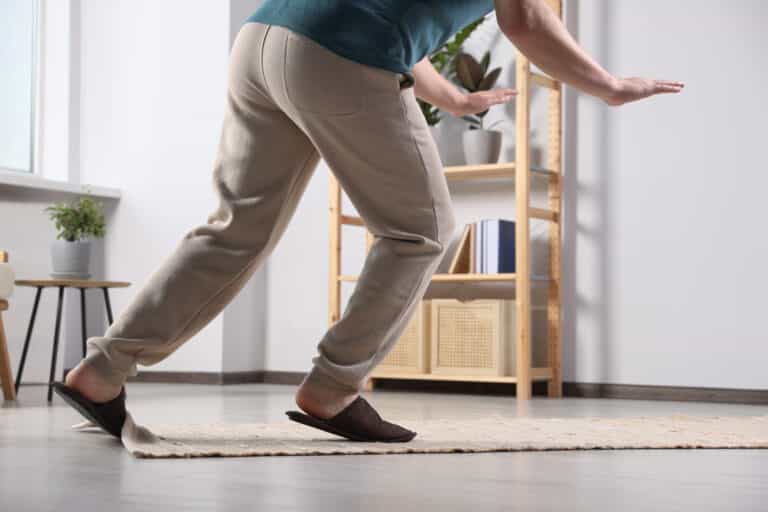This article explores the various types of hernias, a common medical condition where organs or tissues push through weakened muscle walls. We’ll cover the most prevalent forms, including inguinal, femoral, hiatal, incisional, and epigastric hernias, each presenting unique symptoms and complications.
Understanding these can aid in early detection, which is crucial for effective management. We will discuss symptoms that typically involve pain and visible bulging and treatment options ranging from watchful waiting to surgical intervention.
Additionally, preventive measures like maintaining good health, dietary adjustments, and appropriate physical activity will be highlighted.
This guide aims to equip you with the knowledge to recognize hernias early, understand treatment possibilities, and take proactive steps to prevent their occurrence, ultimately helping improve quality of life and prevent serious complications.
Types of Hernia

Unfortunately, even a tiny hole in a muscle wall means that important things beneath— like your organs—can push through to spots they shouldn’t be. These protrusions are called hernias; when left untreated, they can lead to other health conditions.
When a friend or family member says, “My doctor says that I have a hernia,” many different things may come to mind. Without knowing which type of hernia they’re living with, it’s hard to know what should be done about it.
Let’s break down a few of the most common types of hernia for older adults.
Inguinal Hernia
Inguinal hernias are the most common type of hernia, accounting for almost 75 percent of hernia diagnoses. They occur when part of the intestine or other tissue pushes through a weak spot in the lower abdominal muscles.
Inguinal hernias happen in the inguinal canal, which is the area of your groin located between your thigh and lower abdomen. The primary cause of inguinal hernias is a weakness in your abdominal muscles, making it easier for intestines and tissue to push through where it shouldn’t.
Excessive strain from activities such as heavy lifting, constipation, or chronic coughing can all contribute to the development of an inguinal hernia. An injury to the abdominal wall can also create a weak spot, making a hernia more likely to occur.
If you have an inguinal hernia, you’ll most likely experience a bulge in your groin on either side of your pubic bone. This is more noticeable when upright, but it is especially obvious during straining or coughing. Some other symptoms to watch out for include.
Common Inguinal Symptoms to Look Out For
- Pain and discomfort can include a burning or aching sensation in the bulging area.
- Groin discomfort and pain that worsens when coughing, lifting something heavy, or bending over.
- Weakness or pressure in the groin area.
- Testicular symptoms include pain and swelling when the protruding intestine reaches the scrotum.
- Nausea, vomiting, or sudden intense pain are considered serious symptoms and can indicate a strangulated hernia that requires immediate medical attention.
Symptoms can be bothersome and cause other complications. Surgery is often required to reinforce the weakened abdominal wall and correct your hernia. Physical therapy can also be effective in rebuilding the strength of the compromised muscles.
If you have a small hernia and no symptoms, your doctor may recommend monitoring and waiting to see if surgery is the best option.
Having worked with many older adults who have inguinal hernias, I’ve seen many people live normal lives without surgery for their hernia. However, each person is different, and your symptoms (how you feel) should be the most important factor in deciding if surgery is the right option for you.
Femoral Hernia
Femoral hernias are less common than inguinal hernias. They happen in your femoral canal in the upper thigh right below the inguinal canal.
A femoral hernia is caused when part of your intestine or abdominal tissue gets through a weak spot in your abdominal wall near the femoral canal.
Several factors can lead to femoral hernia. If you were born with a weak area in your femoral canal, or it has weakened over time, you’re more susceptible to these types of hernias. Like inguinal hernias, heavy lifting or straining during bowel movements can cause weakened muscle walls, making it easier for your intestines to get through.
The symptoms of a femoral hernia are similar to an inguinal hernia, but they usually appear lower. You’ll typically experience a small to medium-sized lump in your groin or upper thigh, discomfort or pain in your groin, abdominal pain, or hip pain because of how close the hernia is to your hip joint.
While femoral hernias are more common in women because they tend to have a wider pelvis, they occur in both women and men. A femoral hernia can lead to serious complications, including issues with blood vessels, so it’s important to get checked by your doctor.
Hiatal Hernia
Hiatal hernias occur when part of the stomach pushes through a weakness in the diaphragm, a muscle barrier separating your chest and abdominal cavity. People over 50 are especially at risk for hiatal hernias.
Some of the most common symptoms to look out for include:
- Heartburn is one of the most common symptoms of hiatal hernias. It occurs when stomach acid backs up into the esophagus.
- GERD—or gastroesophageal reflux disease—is a condition characterized by chronic acid reflux, which can be caused by hiatal hernias.
- Regurgitation can occur, resulting in difficulty keeping food and drink down.
- Weakness or inhibition of the swallowing muscles can lead to trouble swallowing.
Many of the older adults I’ve worked with have some type of GERD or heartburn. While this can be normal in small amounts, it’s always a good idea to talk to your doctor about your symptoms to rule out any concerning conditions, such as a hiatal hernia.
Lifestyle changes can manage mild cases of hiatal hernias, but severe or complicated cases will likely need surgical correction.
Incisional Hernia
After abdominal surgery, weaknesses can develop in the abdominal wall, allowing your abdominal tissue and organs to push through.
Incisional hernias are a common side effect of abdominal surgery and generally happen a few months after surgery, though they can occur at any time.
If you’ve had abdominal surgery recently, make sure to monitor your incision site for any changes or signs of a hernia. The symptoms of incisional hernias are similar to those we’ve already discussed; you’ll notice a visible bulge at the incision site, which becomes more pronounced when you stand or perform strenuous activities.
There’s no way to know for sure if you’ll get a hernia after your surgery, but some factors can increase the risk of developing an incisional hernia, including:
- Infection at the surgical site can lead to weakened abdominal muscles and an increased risk of incisional hernias.
- Certain health conditions, such as diabetes, lung disease, or renal failure, can impact how well wounds heal, making developing hernias easier.
- Obesity and being overweight can put extra stress and strain on your abdominal wall, increasing the risk of incisional hernias.
- Smoking can prevent tissue from healing and increase your chances of developing a hernia after surgery.
- Medications such as immunosuppressant drugs or steroids can reduce how well your incision heals and make you more susceptible to hernias after surgery.
Having helped many people with recovery after abdominal surgery, I’ve rarely seen incisional hernias.
However, any surgery recovery should be taken seriously, and self-care should be a top priority throughout your recovery. Of course, always seek prompt medical attention if you’re experiencing severe pain or unusual symptoms around your surgical site.
Epigastric Hernia
Epigastric hernias form when the muscles above your belly button and below your sternum have weaknesses or gaps that allow fat tissue from inside your abdomen to push through. This region of your abdominal wall includes part of your stomach, liver, and pancreas.
Most epigastric hernias are small, so it’s possible you won’t experience any noticeable symptoms at all. However, when they do present, the symptoms are similar to those of other hernias.
Look out for a visible lump in the epigastric region of your abdomen, especially when you cough or laugh. You may also experience tenderness or pain or multiple bulges in the area simultaneously.
Those who are overweight, smoke, perform strenuous activities, or use medications that suppress the immune system are more susceptible to epigastric hernias.
Epigastric hernias don’t heal independently, so surgery is the only way to repair the muscles and get everything back where it should be. Depending on the size of your hernia, your doctor may recommend sutures or an implanted mesh to fix the issue.
Care and Prevention

Understanding the different types of hernias gives you the knowledge you need to make informed decisions and can help you detect hernias early on to avoid complications.
Optimal outcomes for older adults are more likely when they recognize the symptoms and talk to their doctor before things get worse.
Even though you can’t predict when or if you’ll get a hernia, there are steps you can take to help prevent them, such as:
- Maintaining your overall health and fitness
- Eating a fiber-rich diet to prevent constipation
- Practicing safe lifting techniques
- Regularly performing exercises to strengthen your abdominal wall
It’s important to know that the exercises we often do to strengthen our abdominal muscles, like sit-ups, may not be the best option for everyone. Talk to your physical therapist for a personalized assessment and recommendations for the best results with your exercise.
Once you know you have a hernia, it’s important to get the right type of care. Let’s take a look at the options:
Monitor the Hernia
For small hernias that aren’t causing pain or discomfort, doctors sometimes recommend waiting and monitoring the hernia so any changes can be addressed quickly.
Get Fitted for a Supportive Truss
Wearing a properly fitted truss may relieve and manage mild symptoms. This supports the weakened area and can offer relief from pain and discomfort. Always talk to your doctor to ensure your truss fits properly and you use it correctly.
Consider Surgery
Hernias that are getting bigger or causing discomfort often require surgery to help relieve symptoms and prevent complications.
Depending on the type and severity of your hernia, you may need open hernia repair surgery, which can take several weeks to recover from, or a less invasive procedure that uses smaller incisions to make the repairs.
Whether you need surgical intervention or your doctor recommends watching and waiting, early intervention and the right treatment plan are essential for managing hernias and improving your quality of life.
Key Takeaways
- Hernias happen when organs or tissues push through a weak spot in the muscle wall. If untreated, they can lead to serious health conditions.
- The most common types include inguinal hernias in the groin, femoral hernias in the upper thigh, hiatal hernias involving the stomach and diaphragm, incisional hernias at a previous surgery site, and epigastric hernias between the belly button and sternum.
- Symptoms generally involve visible lumps, pain, and discomfort that worsen with physical strain.
- Treatment options vary from monitoring small, symptom-free hernias to surgical repair for larger ones or causing discomfort. Supportive measures like wearing a truss can also help.
- Preventing hernias involves maintaining overall health, eating a fiber-rich diet, practicing safe lifting, and strengthening abdominal muscles with appropriate exercises.
- Early recognition and consultation with healthcare providers are crucial to prevent complications and ensure effective management.
FAQs
What are the symptoms of a hernia?
Symptoms of a hernia often include a noticeable bulge in the affected area, which may become more apparent when standing or during physical activity. Other common symptoms include pain or discomfort, especially when bending, coughing, or lifting. In some cases, there may be swelling, a feeling of heaviness in the abdomen, and symptoms of bowel obstruction like nausea and vomiting, particularly if the hernia is strangulated.
How is a hernia diagnosed?
Hernias are primarily diagnosed through a physical examination. Doctors look for a bulge that increases in size when standing or straining. Imaging tests such as an ultrasound, CT scan, or MRI may be used to confirm the diagnosis, especially if the hernia isn’t easily visible.
Can hernias be treated without surgery?
Some small hernias that are not causing symptoms might not require immediate surgery and can be monitored for changes. Non-surgical approaches can include wearing a supportive truss or belt to help alleviate symptoms. However, these measures do not treat the hernia itself but can help manage symptoms.
What are the risks of hernia surgery?
Like any surgery, hernia repair comes with risks. These can include infection, pain, bleeding, hernia recurrence, and complications related to anesthesia. There may also be specific risks depending on the location of the hernia and the patient’s overall health.
How can I prevent a hernia from developing?
While not all hernias can be prevented, reducing abdominal pressure can help. Avoiding heavy lifting, maintaining a healthy weight, treating chronic coughs, and preventing constipation by eating a high-fiber diet are practical measures. Additionally, quitting smoking, which can weaken connective tissues, is also recommended.
Are there any lifestyle changes that can help manage a hernia?
Lifestyle changes can help manage a hernia and prevent it from worsening. These include avoiding activities that increase abdominal pressure, such as lifting heavy objects. Wearing loose clothing and eating smaller, more frequent meals can help if you have a hiatal hernia to reduce symptoms like acid reflux. Regular, gentle exercises can strengthen the muscles around the hernia site, but should be done under medical advice to avoid exacerbating the hernia.
Resources
- InformedHealth.org [Internet]. Cologne, Germany: Institute for Quality and Efficiency in Health Care (IQWiG); 2006-. Hernias: Overview. 2016 Sep 21 [Updated 2020 Jan 30].
- Wo JM. Treatment of older patients with hiatal hernia. Gastroenterol Hepatol (N Y). 2008 Feb;4(2):97-8. PMID: 21904483; PMCID: PMC3088843.
- Smith RE, Shahjehan RD. Hiatal Hernia. [Updated 2023 Aug 14]. In: StatPearls [Internet]. Treasure Island (FL): StatPearls Publishing; 2024 Jan-.






